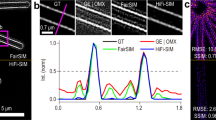Abstract
The DNA ploidy analysis which measures the relative content of DNA in cells by image processing has a wide range of applications in cancer diagnosis. However, the measured results of the same cell in different positions are different because of uneven illumination, which may reduce the measurement accuracy and the diagnosis performance. Many methods are proposed to compensate for uneven illumination, but they are generally aimed at image enhancement, segmentation, or recognition and therefore not suitable for cell measurement. To solve this problem, a compensation method without using white-referencing images is proposed in this paper. This method first grabs images with cells and then removes the cells after locating them on the slide by image segmentation. Next, the regions of removed cells are filled by the thin-plate spline interpolation to obtain background images. Then, two methods used for estimating illumination difference from the background images are provided. Finally, the illumination compensation is made by adding the input image and the illumination difference image. Experiments show that the methods proposed can remove uneven illumination without using white-referencing images.











Similar content being viewed by others
Explore related subjects
Discover the latest articles, news and stories from top researchers in related subjects.References
McNamara, G., Difilippantonio, M., Ried, T., Bieber, F.R.: Microscopy and image analysis. Curr. Protoc. Hum. Genet. 4, 4.4.1–4.4.34 (2017)
Peng, T., Thorn, K., Schroeder, T., Wang, L.: A BaSiC tool for background and shading correction of optical microscopy images. Nat. Commun. 8, 14836 (2016)
Goldman, D.B.: Vignette and exposure calibration and compensation. IEEE Trans. Pattern Anal. Mach. Intell. 32(12), 2276–2288 (2010)
Singh, S., Bray, M.-A.: Pipeline for illumination correction of images for high-throughput microscopy. J. Microsc. 256(3), 231–236 (2014)
Piccinini, F., Lucarelli, E., Gherardi, A., Bevilacqua, A.: Multi-image based method to correct vignetting effect in light microscopy images. J. Microsc. 248(1), 6–22 (2012)
Smith, K., Yunpeng, L.: CIDRE: an illumination-correction method for optical microscopy. Nat. Methods 12, 404–406 (2015)
Model, M.: Intensity calibration and flat-field correction for fluorescence microscopes. Curr. Protoc. Cytom 10(14), 1–10 (2014)
Young, I.T.: Shading correction: compensation for illumination and sensor inhomogeneities. Curr. Protoc. Cytom. 14, 2–11 (2001)
Model, M.: Intensity calibration and flat-field correction for fluorescence microscope. Curr. Protoc. Cytom. 68, 10–14 (2014)
Schultz, M.L., Lipkin, L.E., Wade, M.J., Lemkin, P.F., Carman, G.M.: High resolution shading correction. J. Histochem. Cytochem. 22(7), 751–754 (1974)
Varga, V.S., et al.: Scanning fluorescent microscopy is an alternative for quantitative fluorescent cell analysis. Cytometry A 60, 53–62 (2004)
Poon, S.S., Wong, J.T., Saunders, D.N., Ma, Q.C.: Intensity calibration and automated cell cycle gating for high-throughput image-based siRNA screens of mammalian cells. Cytometry A 73(10), 904–917 (2008)
Leong, F.J., Brady, M., McGee, J.: Correction of uneven illumination (vignetting) in digital microscopy images. J. Clin. Pathol. 56, 619–621 (2003)
Kang, S.B., Weiss, R.: Can we calibrate a camera using an image of a flat textureless Lambertian surface. Proc. ECCV 2, 640–653 (2000)
Wolf, D.E., Samarasekera, C., Swedlow, J.R.: Quantitative analysis of digital microscope images. Methods Cell Biol. 81, 356–396 (2007)
Coster, A., Wichaidit, C., Rajaram, S.: A simple image correction method for high-throughput microscopy. Nat. Methods 11, 602 (2015)
Schindelin, J.: An open-source platform for biological-image analysis. Nat. Methods 9, 676–682 (2012)
Chen, X., Gu, C., Li, Z., et al.: Accelerated direct solution of electromagnetic scattering via characteristic basis function method with Sherman–Morrison–Woodbury formula-based algorithm. IEEE Trans. Antennas Propag. 64(10), 4482–4486 (2016)
Singh, S., Bray, M.A., Jones, T.R.: Pipeline for illumination correction of images for high-throughput microscopy. J. Microsc. 256, 231–236 (2014)
Khan, M.B., Nisar, H., Ng, C.A.: A vignetting correction algorithm for bright-field microscopic images of activated sludge. Digit. Image Comput. Tech. Appl. 1, 1–4 (2016)
Acknowledgements
This research is partly supported by The National Natural Science Foundation of China (61673142), the Foundation of Education Department of Heilongjiang Province (12511096), Natural Science Foundation of HeiLongjiang Province of China (F2017013), Natural Science Foundation of HeiLongjiang Province of China (JJ2019JQ0013), University Nursing Program for Young Scholars with Creative Talents in Heilongjiang Province (UNPYSCT-2016034 ), Outstanding Youth Talent Foundation of Harbin of China (2017RAYXJ013), and the Research Fund for the Doctoral Program of Higher Education of China (20132303120003) and the Science Funds for the Young Innovative Talents of HUST (20152).
Author information
Authors and Affiliations
Corresponding author
Additional information
Publisher's Note
Springer Nature remains neutral with regard to jurisdictional claims in published maps and institutional affiliations.
Rights and permissions
About this article
Cite this article
Yu, J., Zhao, J., Shao, H. et al. Illumination compensation for microscope images based on illumination difference estimation. Vis Comput 38, 1775–1786 (2022). https://doi.org/10.1007/s00371-021-02104-7
Accepted:
Published:
Issue Date:
DOI: https://doi.org/10.1007/s00371-021-02104-7




